Cut Edge (Bridge) A bridge is a single edge whose removal disconnects a graph.
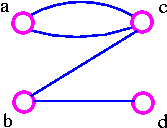
The above graph G1 can be split up into two components by removing one of the edges bc or bd. Therefore, edge bc or bd is a bridge.
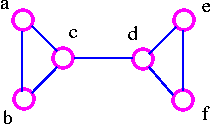
The above graph G2 can be disconnected by removing a single edge, cd. Therefore, edge cd is a bridge.
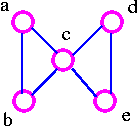
The above graph G3 cannot be disconnected by removing a single edge, but the removal of two edges (such as ac and bc) disconnects it.
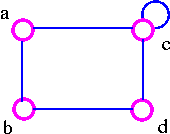
The above graph G4 can be disconnected by removing two edges such as ac and dc.
Cut Set
A cut set of a connected graph G is a set S of edges with the following properties
- The removal of all edges in S disconnects G.
- The removal of some (but not all) of edges in S does not disconnects G.
As an example consider the following graph
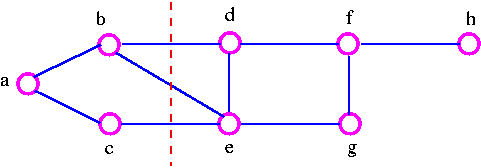
We can disconnect G by removing the three edges bd, bc, and ce, but we cannot disconnect it by removing just two of these edges. Note that a cut set is a set of edges in which no edge is redundant.
Cut-Vertex
A cut-vertex is a single vertex whose removal disconnects a graph.
It is important to note that the above definition breaks down if G is a complete graph, since we cannot then disconnects G by removing vertices. Therefore, we make the following definition.
Connectivity of Complete Graph
The connectivity k(kn) of the complete graph kn is n-1. When n-1 ≥ k, the graph kn is said to be k-connected.
Vertex-Cut set
A vertex-cut set of a connected graph G is a set S of vertices with the following properties.
- the removal of all the vertices in S disconnects G.
- the removal of some (but not all) of vertices in S does not disconnects G.
Consider the following graph

We can disconnects the graph by removing the two vertices b and e, but we cannot disconnect it by removing just one of these vertices. the vertex-cutset of G is {b, e}.
Note that the connectivity k(G) does not exceed the edge-connectivity λ(G). This inequality holds for all connected graph.
Formally, for any connected graph G we have
K(G) ≤ λ(G) ≤ δ(G)
where δ(G) is the smallest vertex-degree in G. But it is certainly possible for both inequality in above theorem to be strict inequalities (that is, k(G) < λ(G) < δ(G)) For example, in the following graph,
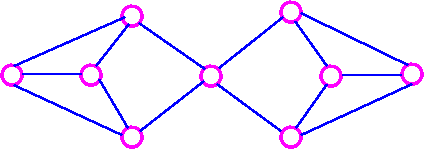
K(G)=1, λ(G) = 2, and δ(G) = 3.
